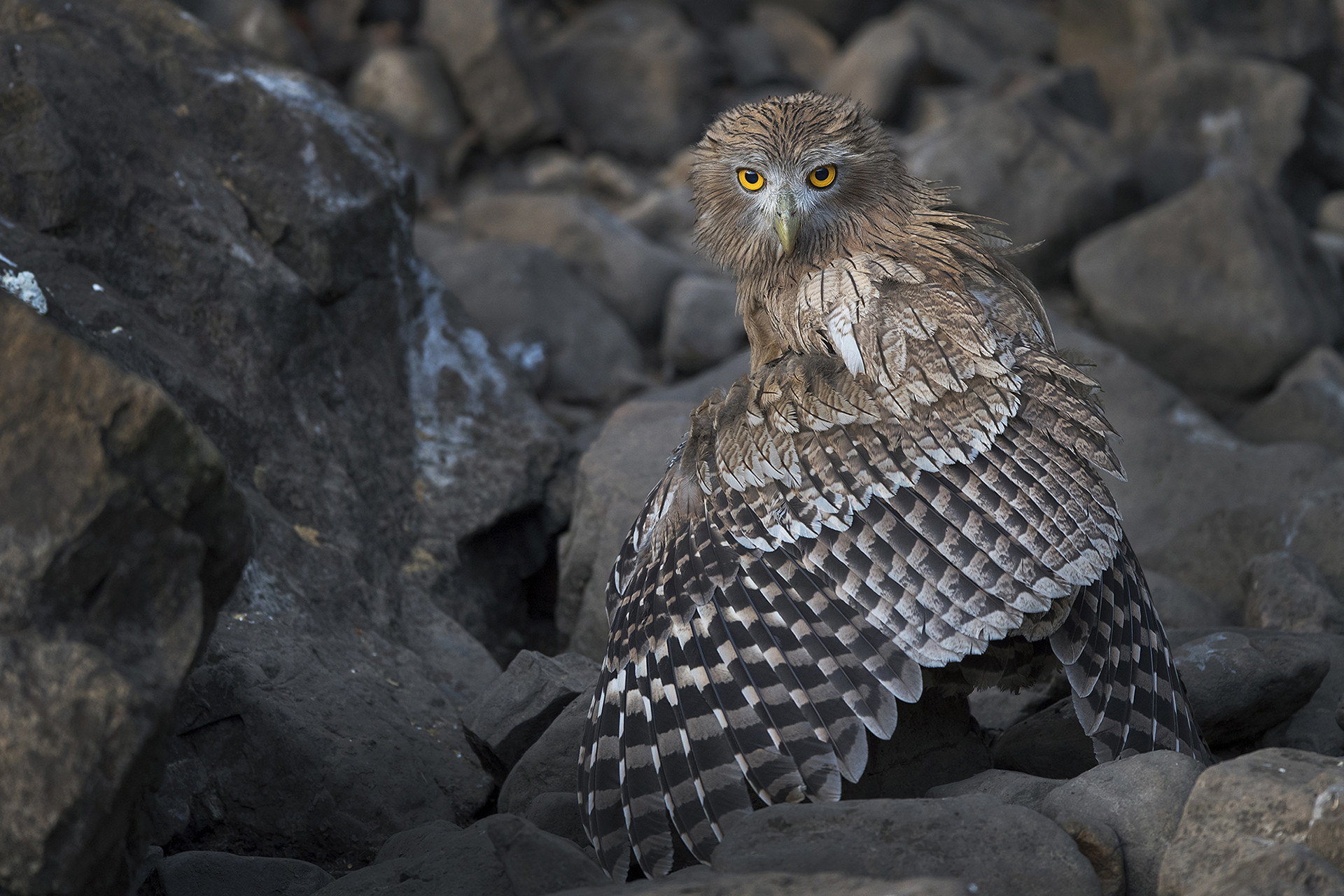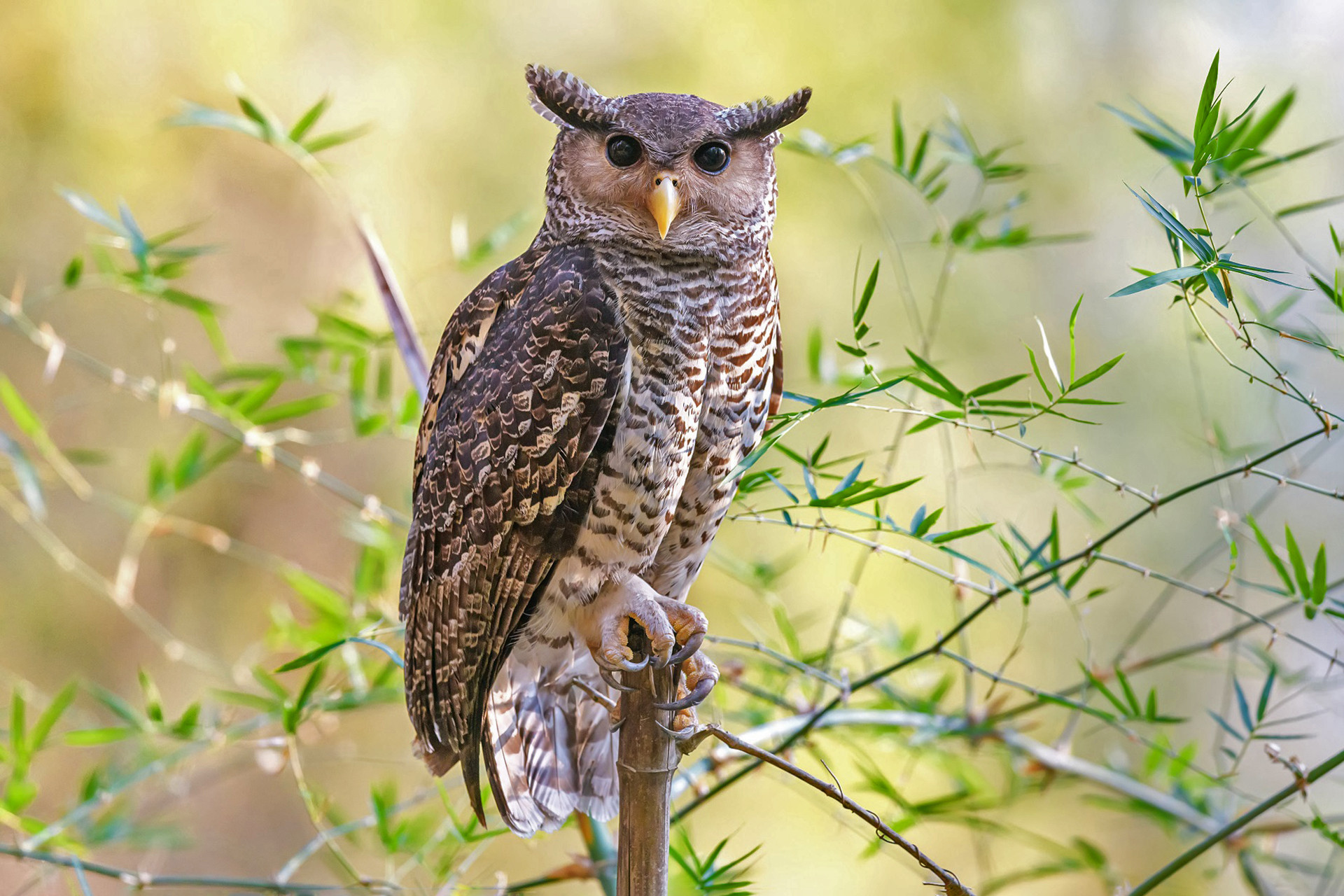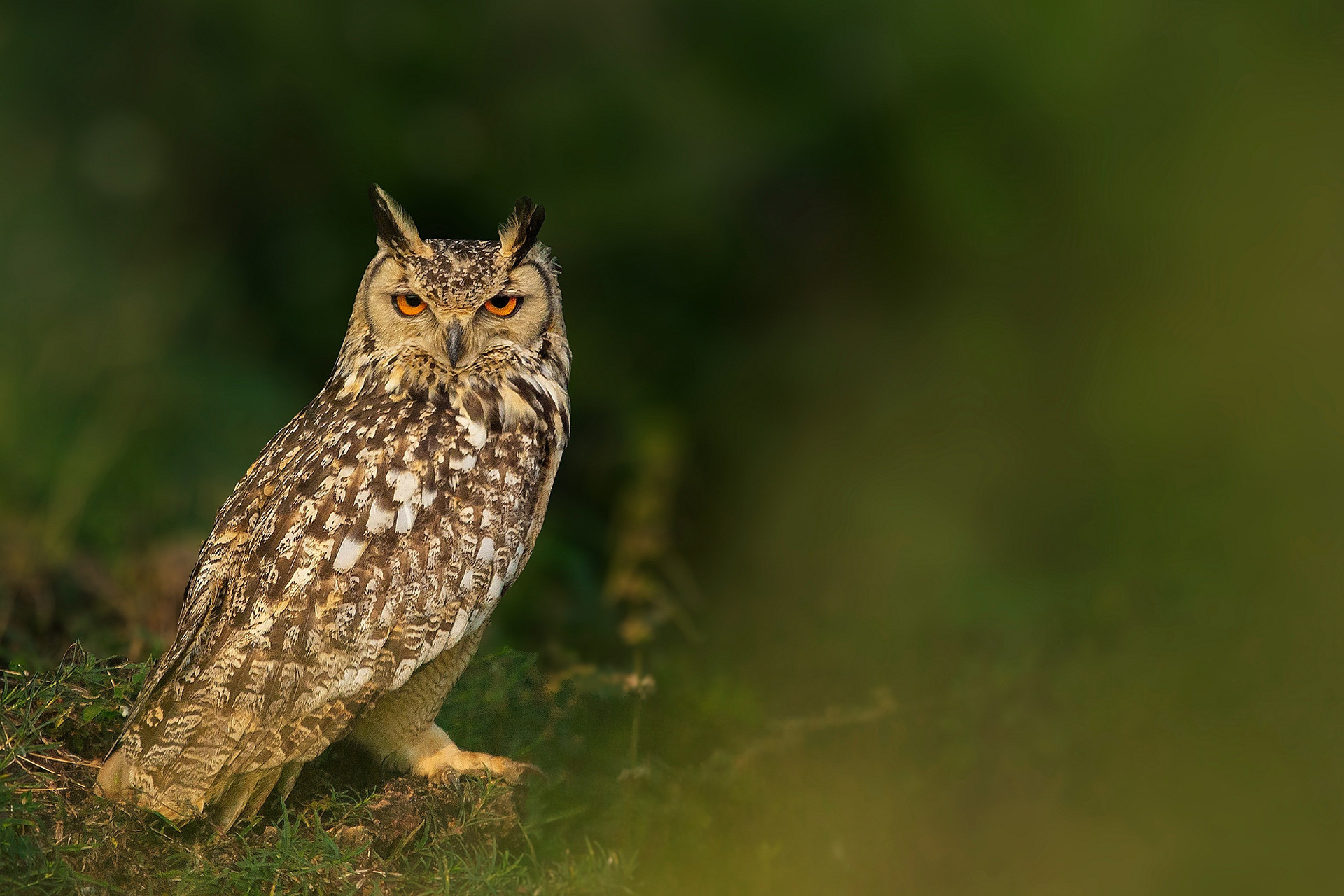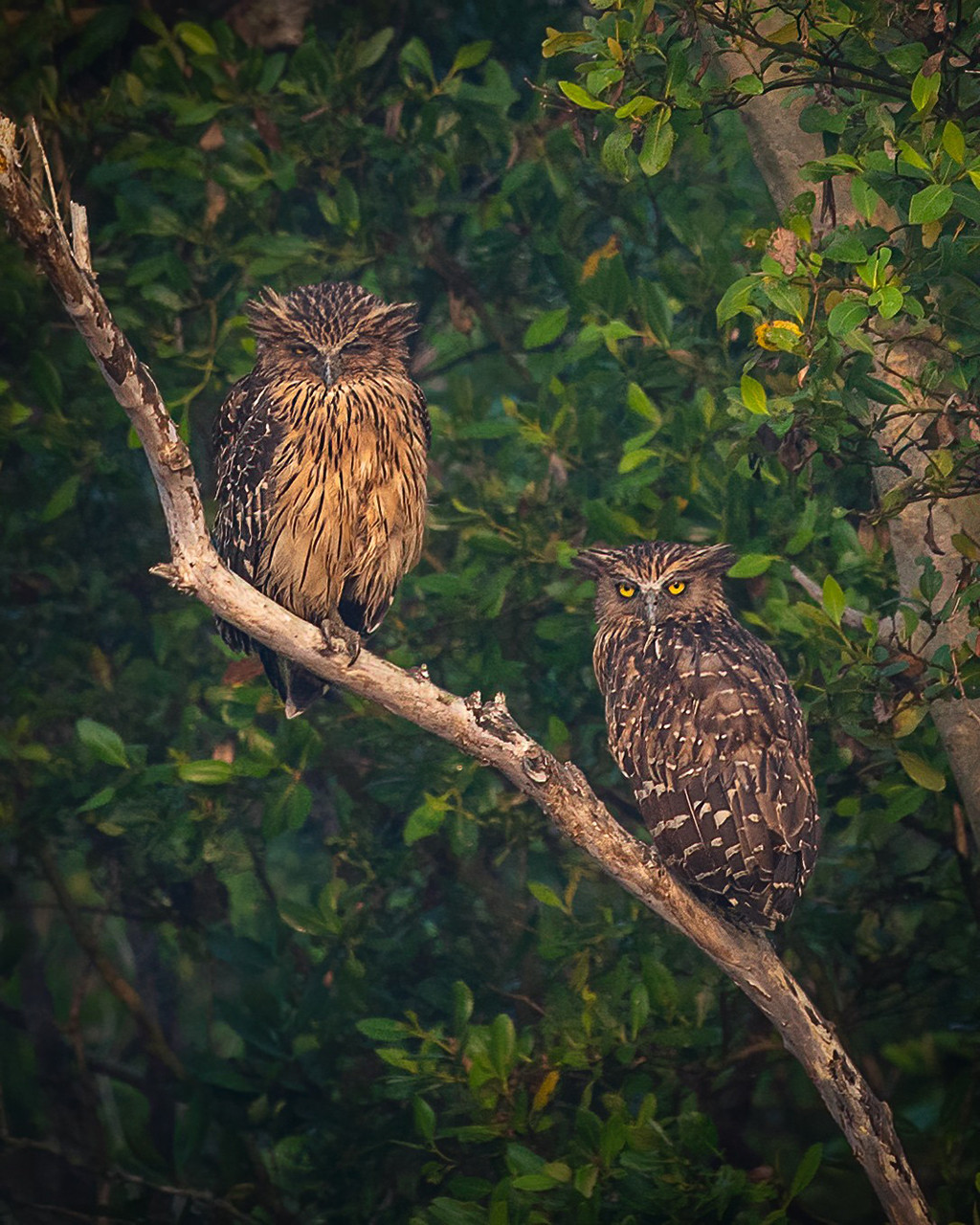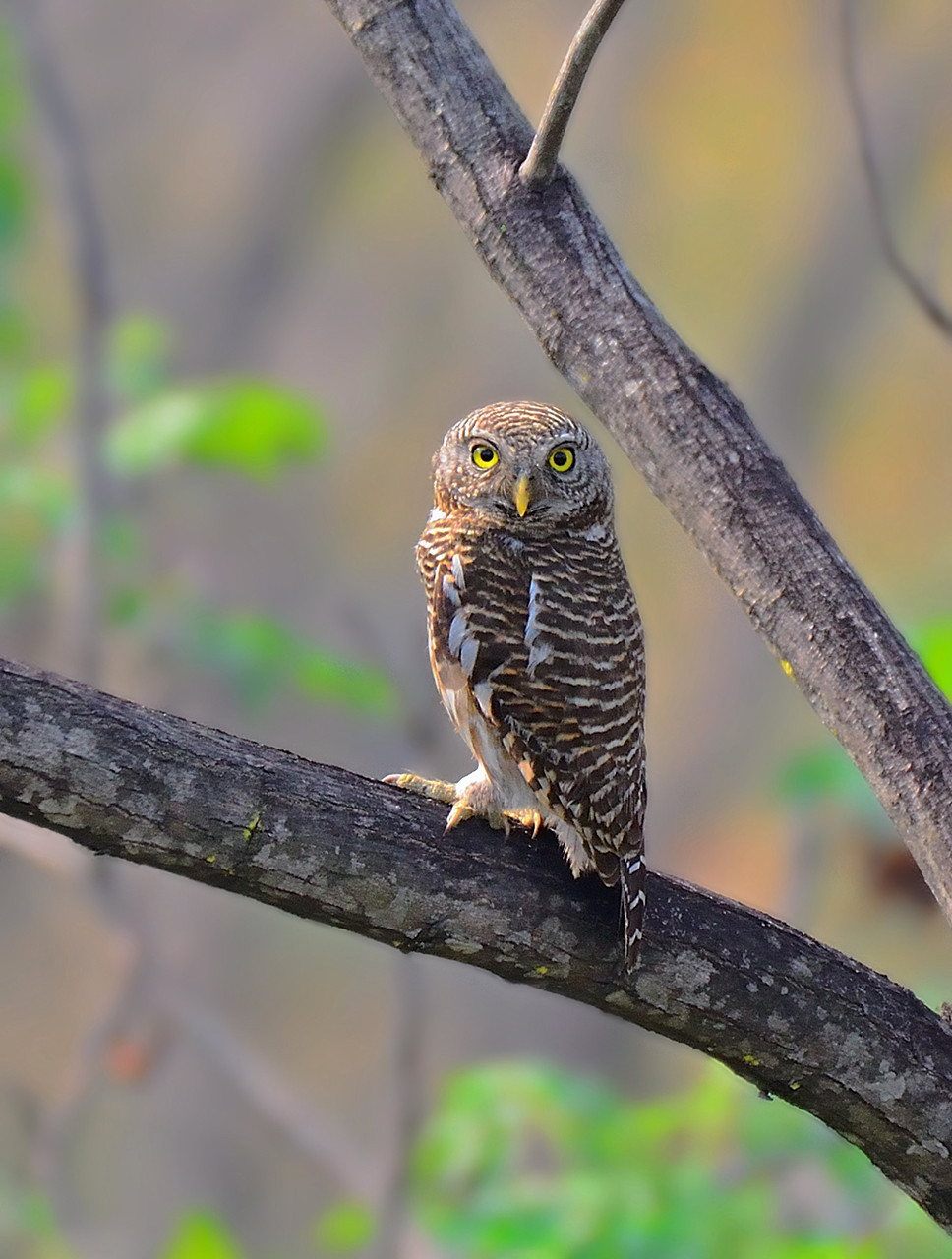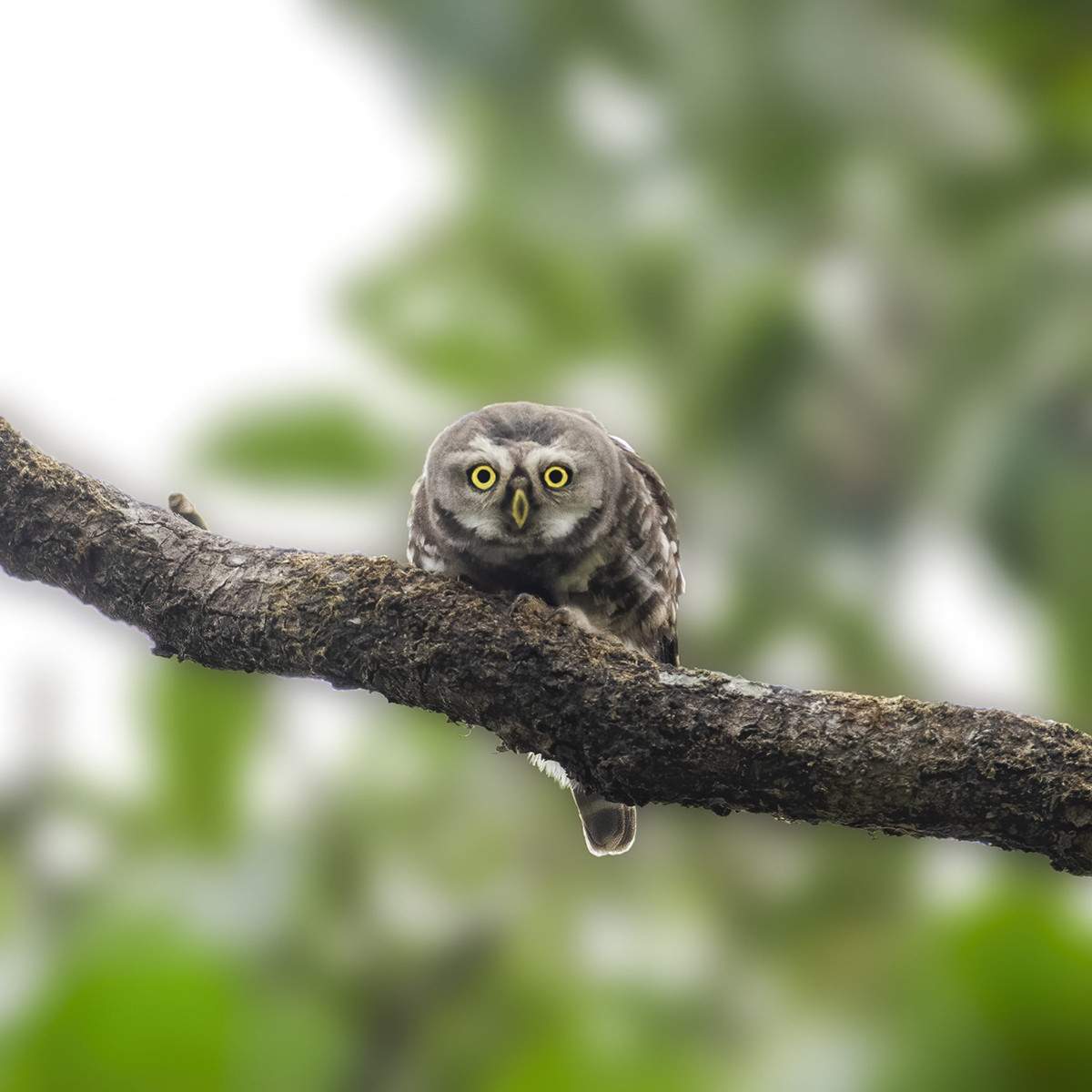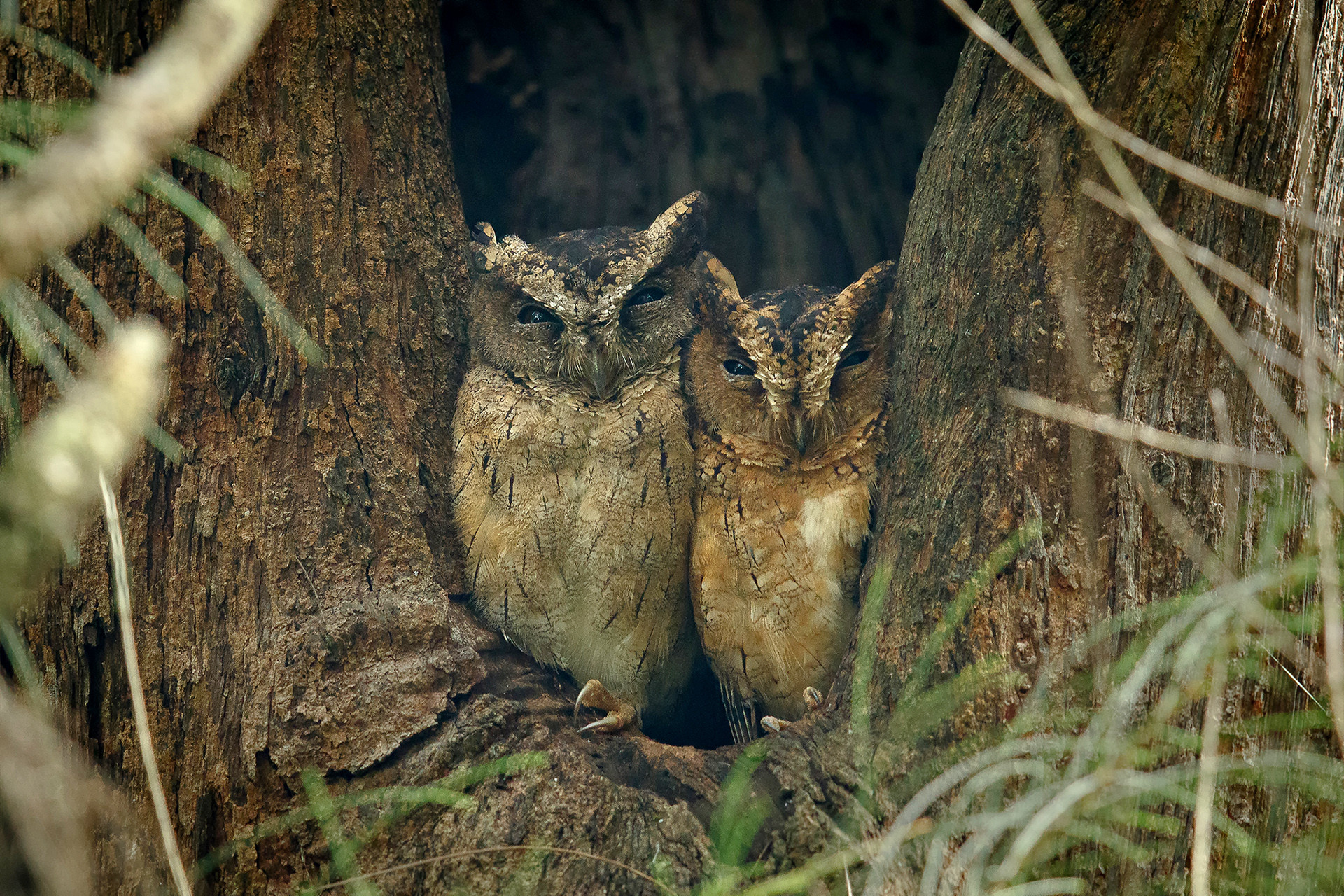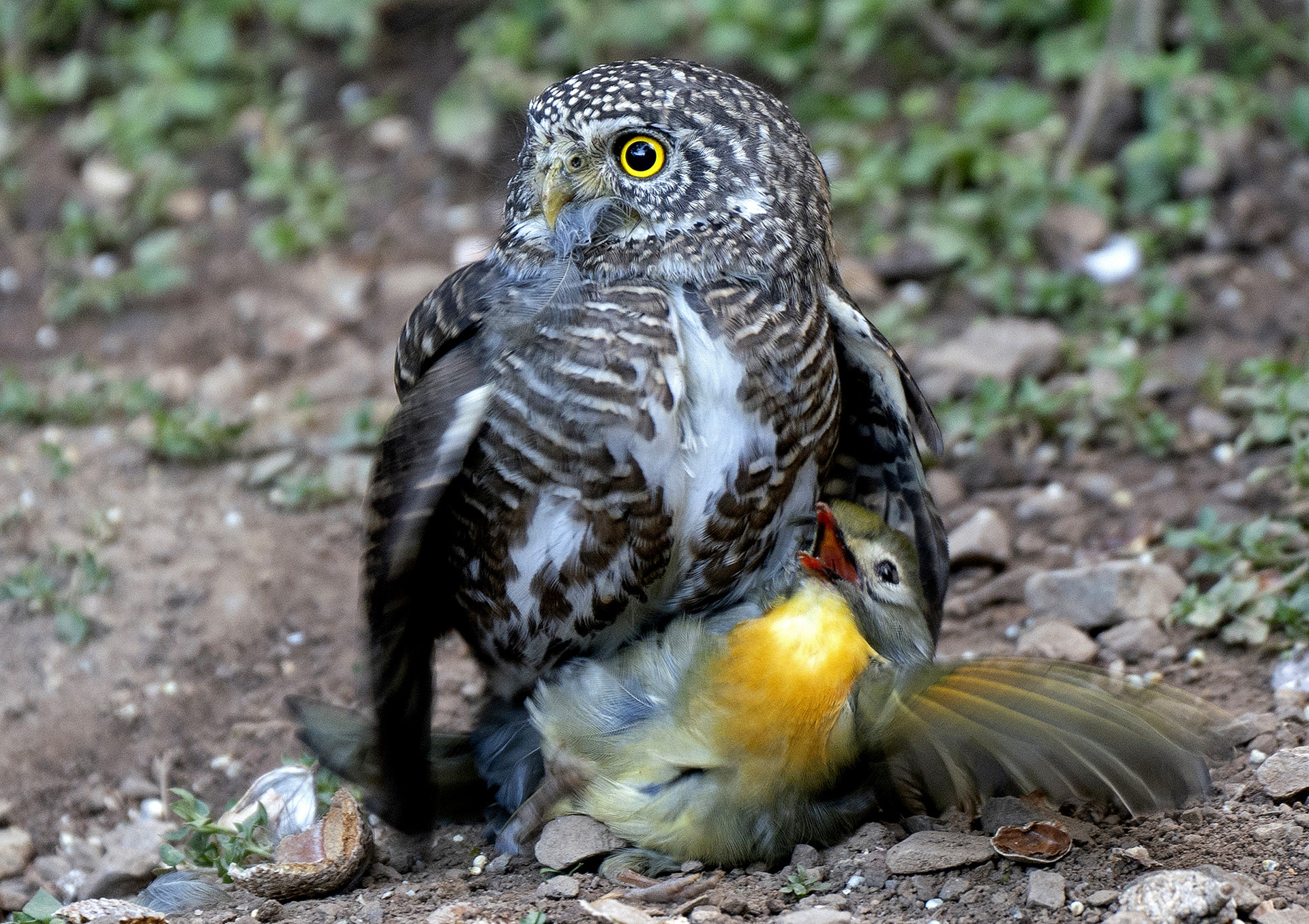The unmistakable hoot of an owl is a sound that is often used to symbolise nighttime, when these mysterious avians are most active. Owls glide through their habitats in silence, keeping a check on the local populations of birds, rodents, frogs, lizards and insects. Beyond their ecological roles, owls kindle mixed reactions from people. While some consider them to be symbols of wealth, knowledge and wisdom, others associate them with ill omens.
India is home to about 35 species of owls which are divided into two families – True Owls or Typical Owls (Strigidae) and Barn Owls or Bay Owls (Tytonidae). As the name suggests, True Owls have the distinct features that describe this species, like large, coloured eyes and the presence of ear tufts. On the other hand, Barn Owls are not as big in size with small, dark eyes and heart-shaped facial discs.
Despite being revered from a mythological point of view, owls are hunted for illegal trade and are victims of black magic practices and superstitious taboos. Their ear tufts, bones and organs are often sought after for various rituals, endangering the species while fueling myths about them. Owls with large ear tufts are persecuted more for these reasons. According to Traffic, a network monitoring the illegal trade of animals, between 1992 and 2008, more than 1000 owls across 13 species were traded. Ironically, owls are protected under the Wildlife (Protection) Act of 1972.
The data clearly shows that a lack of awareness plagues the owls of our country, and people need to understand their importance in the ecosystem. Despite several owls being designated as Least Concern by the IUCN, the fact that their populations are decreasing needs to be emphasised so that concerted efforts are made to conserve them. Through this list, we hope to share some basic information about 15 owl species from the Indian subcontinent.
Scroll down to learn more about them as we shine a light on these nocturnal birds of prey!
Brown Fish-Owl (Ketupa zeylonensis)
IUCN Redlist Status: Least Concern
Brown Fish-Owls are commonly found in woodlands bordering streams and lakes. They feed mainly on fish and aquatic crustaceans, capturing the prey using their long legs, while skimming over water bodies. They have considerably longer legs which are featherless and help them in hunting fish. Another adaptation that aids their hunting process is the presence of a rough texture at the bottom of their toes, to help them grab and hold on to slippery fish.
Spot-bellied Eagle-Owl (Bubo nipalensis)
IUCN Redlist Status: Least Concern
Spot-bellied Eagle-Owls or Forest Eagle-Owls are nocturnal species, and during the day they prefer to hide within dense forests. Evergreen forests or moist deciduous forests are their habitats of choice, but they can adapt to other land habitats as well. Despite being widely distributed in different parts of India, they are difficult to spot as they blend into the thick foliage.
Indian Eagle-Owl (Bubo bengalensis)
IUCN Redlist Status: Least Concern
Found throughout the Indian subcontinent, Indian Eagle-Owls, also called Rock Eagle-Owls, are usually spotted in rocky regions as well as semi-deserts with rocks and bushes. As seen in the image, they have distinct orange eyes. The colour of their bills can vary between black and dark green. The Indian Eagle-Owl was earlier considered to be a subspecies of the Eurasian Eagle-Owl (Bubo bubo).
Buffy Fish-Owl (Ketupa ketupu)
IUCN Redlist Status: Least Concern
Also known as Malay Fish-Owls, Buffy Fish-Owls can survive close to human-occupied spaces and in isolated forest areas. Their natural habitats are tropical forests and wetlands. They usually roost within dense foliage, making it difficult to spot them. At night, they are seen on branches near water bodies.
Short-eared Owl (Asio flammeus)
IUCN Redlist Status: Least Concern
As the name suggests, Short-eared Owls have small ear tufts that are not easily visible. Adults are heavily streaked and spotted, and usually found on perches near open lands. They are one of the most widespread bird species in the world and sightings have been recorded in all continents except Australia and Antarctica.
You may also like to read
Brown Wood-Owl (Strix leptogrammica)
IUCN Redlist Status: Least Concern
Brown Wood-Owls can be identified by their dark black eyes and their striped wings and underparts. They are mainly found in dense forests in several parts of India and its neighbouring countries. Despite being listed as Least Concern by the IUCN, their population trend is decreasing.
Barn Owl (Tyto alba)
IUCN Redlist Status: Least Concern
The most widespread land bird species in the world, the Barn Owl is usually spotted in abandoned buildings, chimneys and in tree holes. They occupy a range of habitats and are one of the most common urban bird species. They mainly feed on rats, mice, bats, frogs and lizards, and are considered one of the most economical pest control agents to protect crops on fields.
Not only do Barn Owls pair for life, they also believe in strengthening their bond by indulging in aerial displays and making purring sounds before mating, writes naturalist and photographer Abhishek Gulshan. Learn more about Barn Owls in his story Owl Away!
Asian Barred Owlet (Glaucidium cuculoides)
IUCN Redlist Status: Least Concern
Asian Barred Owlets, as the name suggests, have a distinct barred and streaked appearance. They can be seen perched on dead tree stumps or on bare tree branches. They mainly feed on large insects.
Spotted Owlet (Athene brama)
IUCN Redlist Status: Least Concern
Spotted Owlets are nocturnal and roost within tree cavities, rock crevices or in manmade structures like irrigation wells. Found throughout the Indian subcontinent, they prefer tree cavities to build nests during the breeding season. Among Spotted Owlets, clutch sizes vary between two and five eggs.
Jungle Owlet (Glaucidium radiatum)
IUCN Redlist Status: Least Concern
As the name suggests, Jungle Owlets are found in densely wooded areas. Also known as Barred Jungle Owlets, these small owls lack the ear tufts and have a heavily barred appearance. They mainly feed on grasshoppers, locusts, cicadas and other insects.
Forest Owlet (Athene blewitti)
IUCN Redlist Status: Endangered
Endemic to the forests of central India, the Forest Owlet is an endangered owl species. Destruction of forest land and conversion for agriculture and developmental activities are some of the major threats to the species. According to the IUCN, there are only less than 1000 mature extant individuals within the Forest Owlet’s range.
Indiscriminate cutting of large trees has greatly impacted the local Forest Owlet populations in Madhya Pradesh writes wildlife scientist, Prachi Mehta. Read more about the widely persecuted Forest Owlets.
You may also like to read
Indian Scops-Owl (Otus bakkamoena)
IUCN Redlist Status: Least Concern
Frequently found in woodlands and wooded gardens, the Indian Scops-Owl is a nocturnal species. They build nests in tree holes and often hide in them or in tree branches. Owing to their bark-like plumage, they are difficult to spot.
Oriental Scops-Owl (Otus sunia)
IUCN Redlist Status: Least Concern
Oriental Scops-Owls are found near human-occupied spaces in gardens and parks as well as in forests and foothills. They have been documented in greyish-brown, greyish-red and rufous morphs. Pictured here is a rufous morph which is not that commonly observed. Scops-Owls feed on insects, small mammals and birds.
Collared Owlet (Taenioptynx brodiei)
IUCN Redlist Status: Least Concern
Collared Owlets or Collared Pygmy Owls are residents of mountainous regions, mainly seen in the foothills of the Himalayas. They are small-sized owls that are active during dawn and dusk. Don't be fooled by the tiny appearance as these owls are capable of hunting and killing birds bigger than them.
Little Owl (Athene noctua)
IUCN Redlist Status: Least Concern
Little Owls have compact bodies with greyish-brown spotted and streaked plumage. As seen in the image, they are often seated on elevated perches from where they look for insects, amphibians and birds. They also hunt on the ground. In Greek and Roman mythology, Little Owls were known to accompany the goddesses of wisdom, Athena and Minerva.
